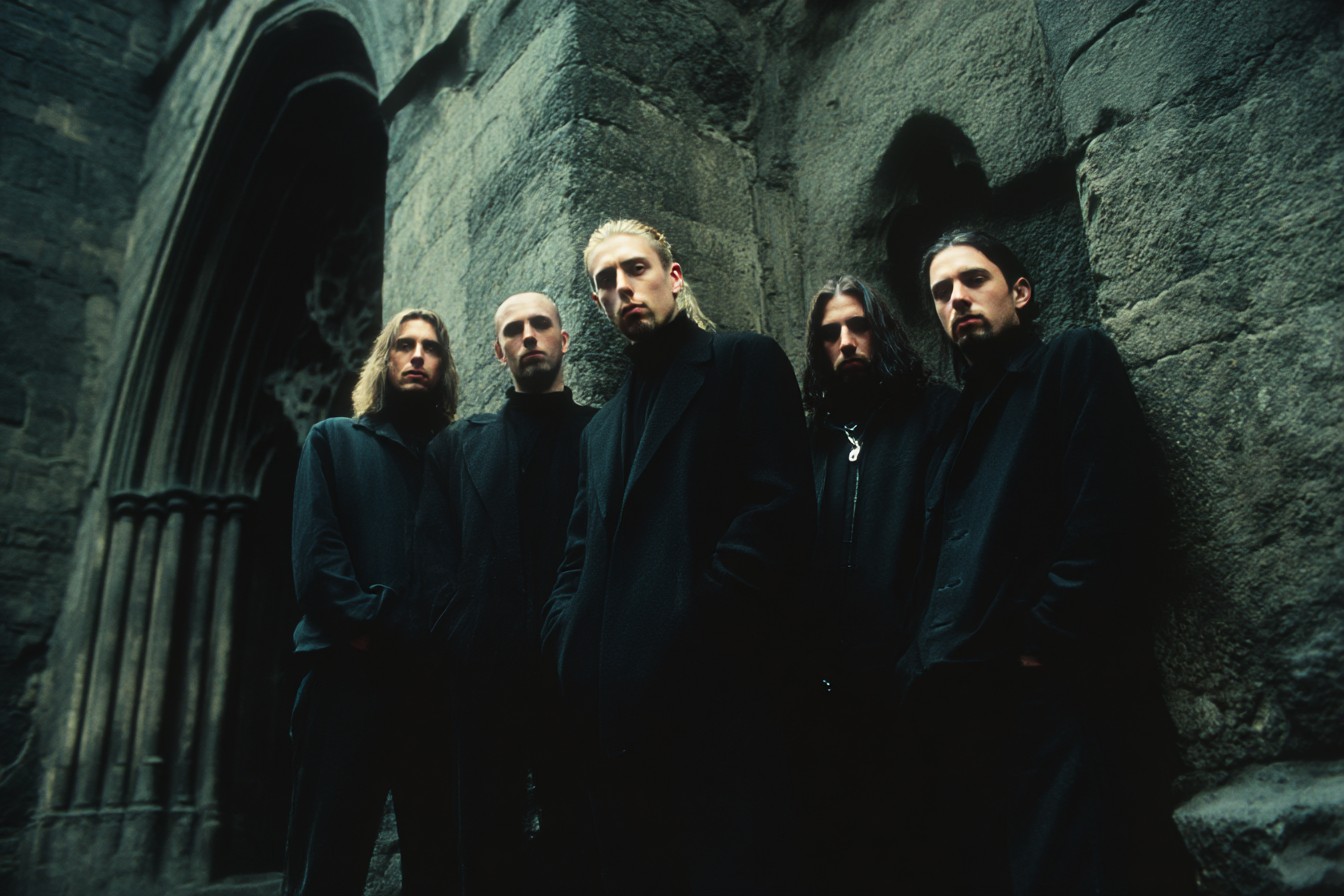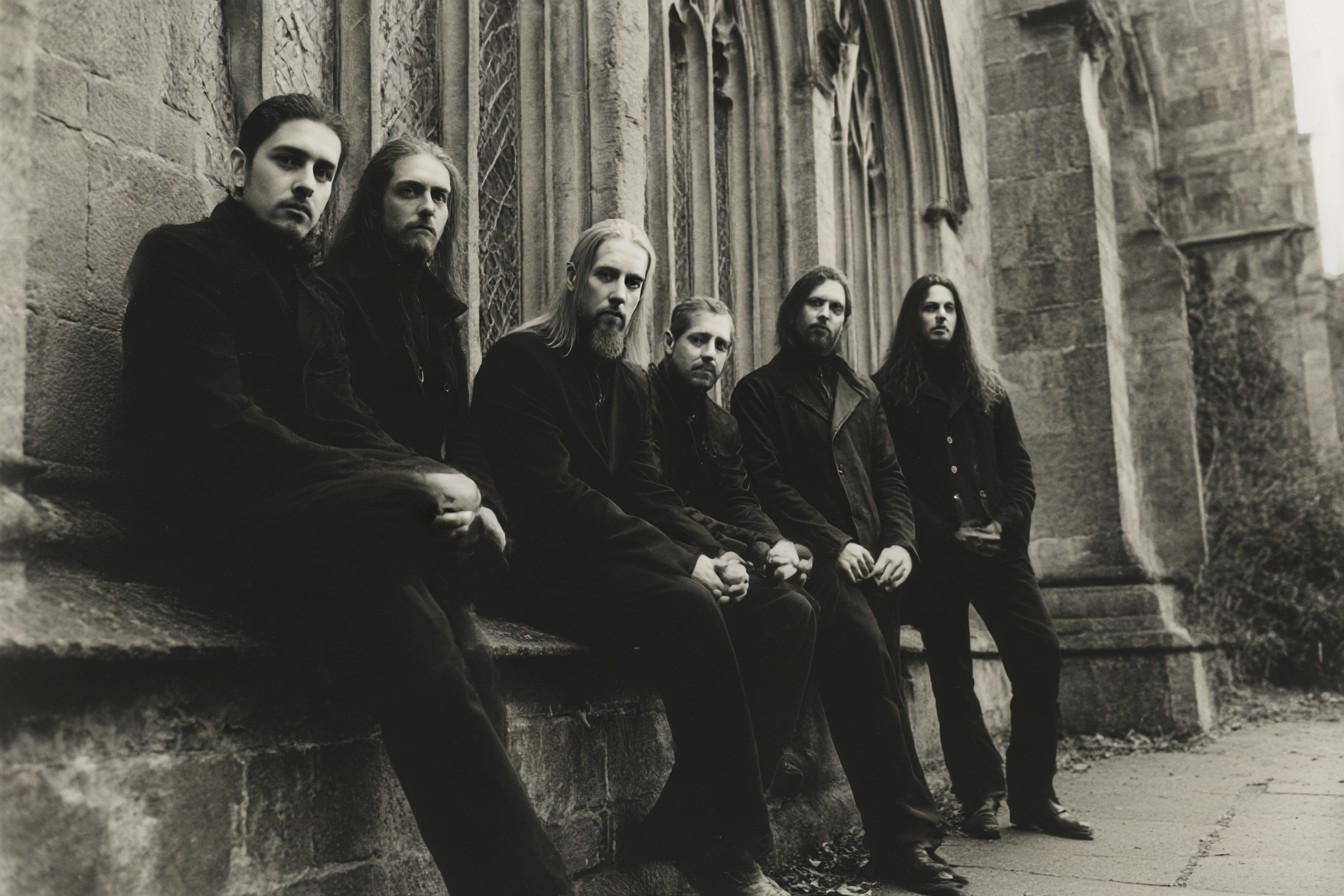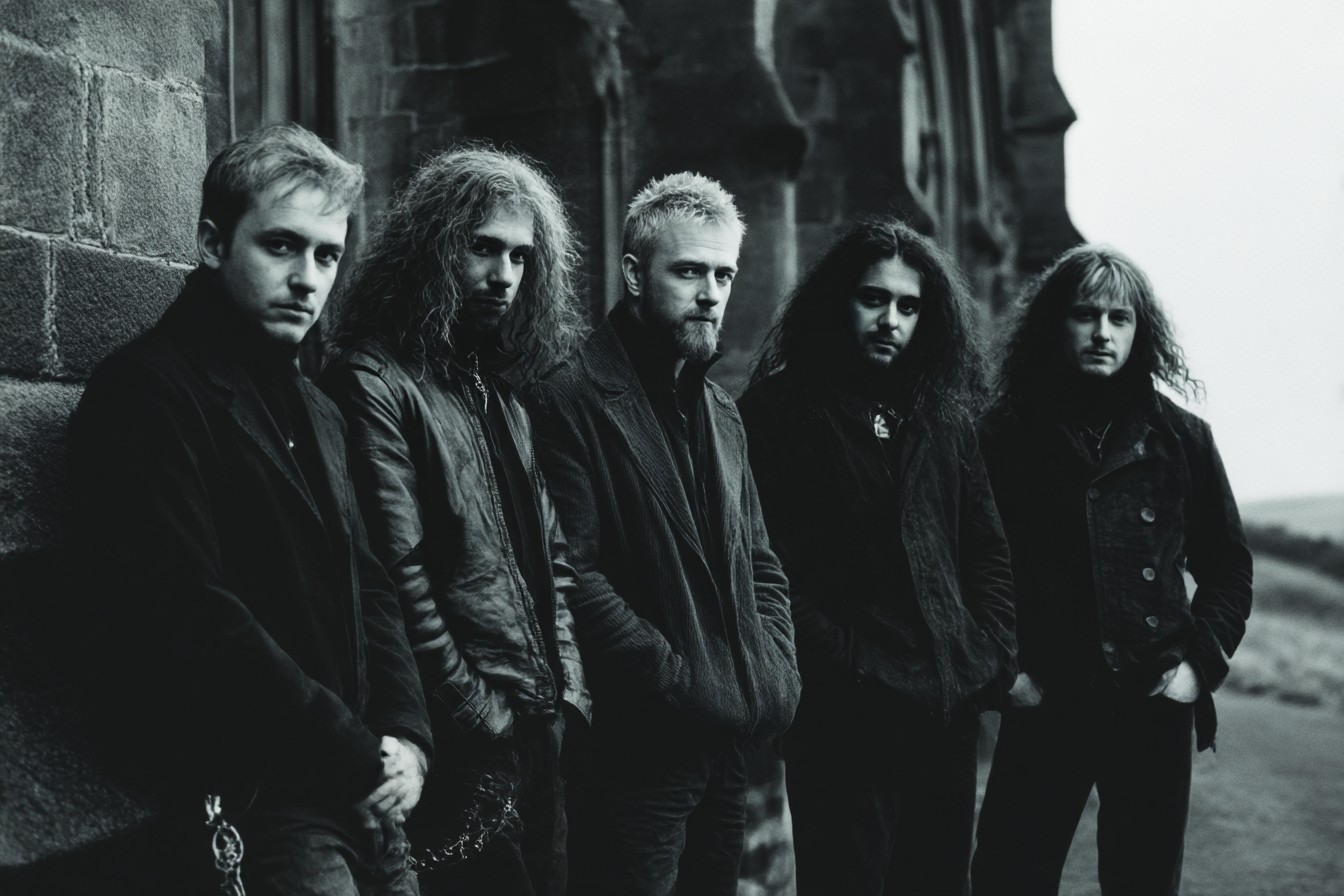I first encountered Paradise Lost’s “Draconian Times” in the spring of 1995 at a listening station in Tower Records. I remember standing there with those flimsy headphones clamped to my ears, the outside world reduced to muffled background noise as “Enchantment” swirled around my brain and reconfigured my understanding of what heavy music could be. Three minutes in, I was already mentally calculating how many meals I’d need to skip to afford buying the album right then. By the time track two, “Hallowed Land,” kicked in with its perfect marriage of crushing guitars and haunting melody, skipping lunch seemed like a small price to pay for this revelation.
“Draconian Times,” Paradise Lost’s fifth studio album, landed at a pivotal moment both for the band and for metal as a whole. Released in June 1995, it emerged during one of metal’s most uncertain periods—grunge had dismantled hair metal’s commercial dominance, nu-metal was beginning its ascent, and extreme metal was splintering into increasingly specialized subgenres. The landscape was fractured, with no clear path forward for bands unwilling to chase trends.
Into this chaotic environment stepped five guys from Halifax, England, with an album that somehow managed to be both uncompromisingly heavy and unexpectedly accessible, both distinctly of its moment and curiously timeless. “Draconian Times” wasn’t Paradise Lost’s heaviest work—that honor belongs to their death/doom origins on “Lost Paradise” and “Gothic.” Nor was it their most experimental—they would push those boundaries on later releases like “One Second” and “Host.” But it was unquestionably their most perfectly balanced creation—the rare album where a band finds the exact sweet spot between their underground roots and their more mainstream ambitions.
The album opens with “Enchantment,” which serves as both mission statement and perfect entry point. Nick Holmes’ vocals immediately signal the evolution from his earlier death growls to a more melodic approach, though still delivered with unmistakable grit and gravity. The guitars of Gregor Mackintosh and Aaron Aedy establish the album’s signature sound—massive, down-tuned riffs contrasted with ethereal lead lines that seem to float above the heaviness like ghostly countermelodies. It’s a formula that sounds simple on paper but proved devilishly difficult for imitators to replicate.
What struck me most on that first listen—and what continues to impress revisiting the album nearly thirty years later—is how confidently Paradise Lost balanced seemingly contradictory elements. “Draconian Times” is simultaneously gothic and metal, melancholic and aggressive, introspective and anthemic. It draws from death metal, doom, gothic rock, and even traces of pop sensibility without ever feeling like a calculated hybrid. This wasn’t a band awkwardly trying to broaden their appeal; this was a band discovering their definitive voice.
The production, handled by Simon Efemey (who had worked with Napalm Death and later with The Wildhearts), deserves special recognition for capturing this balance. The guitars have remarkable weight and density but never become murky or indistinct. The drums sound powerful but natural, not triggered into mechanical precision like many metal productions of the era. And Holmes’ vocals sit perfectly in the mix—present enough to carry the melodies but never so dominant that they overshadow the instrumental textures.
Track three, “The Last Time,” showcases the album’s approach to tempo—mid-paced and deliberate, creating a sense of inexorable momentum rather than frantic speed. This measured pace allows the melodies room to breathe and the emotional weight of the songs to fully register. It’s metal that values atmosphere and mood as much as aggression or technical prowess.
Then there’s “Forever Failure,” perhaps the album’s emotional centerpiece and a song that exemplifies Paradise Lost’s unique approach to heaviness. Opening with samples from Charles Manson interviews (a decision that feels dated now but was genuinely unsettling in 1995), it builds around a central guitar motif that’s simple but devastatingly effective in its melancholy. Holmes delivers some of his most affecting vocals, conveying a weary resignation that hits harder than any death growl could in this context. The song creates a profound emotional weight without resorting to extreme tempos or vocal techniques—a different kind of heaviness than metal typically employed.
This capacity for emotional resonance beyond anger or aggression is what separated “Draconian Times” from many of its contemporaries. Songs like “Shadowkings” and “Elusive Cure” tackle themes of disillusionment, loss, and existential questioning with uncommon nuance. The lyrics avoid both the cartoonish extremity of death metal and the self-pitying directness of grunge, instead offering poetic ambiguity that allows listeners to project their own experiences onto the music.
Musically, the album draws from a surprisingly diverse palette. “Yearn for the Endless Shores” incorporates subtle keyboard textures that enhance the atmosphere without compromising the guitar-driven foundation. “Shades of God” features these haunting clean guitar arpeggios that could have come from a Sisters of Mercy album before erupting into one of the record’s heaviest riffs. The title track balances pummeling verses with a chorus that’s almost… dare I say it… catchy?
That willingness to embrace melody and memorability without sacrificing authenticity is what made “Draconian Times” such a breakthrough. Paradise Lost recognized that accessibility didn’t have to mean compromise—that you could write songs with genuine hooks and still maintain your artistic integrity and heaviness. This approach would prove enormously influential, particularly in European metal scenes where bands like Katatonia, Amorphis, and Anathema would follow similar trajectories from their extreme roots toward more melodic territory.
The album’s impact was immediate in Europe, where it sold over 100,000 copies in its first year, earned the band magazine covers, and expanded their audience far beyond the death/doom underground that had embraced their earlier work. In America, the reception was more muted—partly due to less promotional support and partly because the U.S. metal scene was moving in a different direction with the rise of nu-metal and metalcore. But even stateside, “Draconian Times” became an important cult favorite, influencing a generation of bands that would emerge in the early 2000s.
I had the chance to interview guitarist Gregor Mackintosh in 2007 when Paradise Lost was touring for their “In Requiem” album, which marked something of a return to the “Draconian Times” sound after their more experimental period. When I asked about the 1995 album’s creation and impact, he seemed both proud of and slightly bemused by its legacy.
“We were just trying to write the best songs we could,” he told me backstage at a club in Chicago, surrounded by the kind of vintage amplifiers that gear nerds would sacrifice limbs to own. “We’d been moving away from the pure death/doom thing for a couple albums already. But something clicked on ‘Draconian Times’—we found this balance that felt right. We didn’t realize at the time that we were helping create a template for gothic metal. We were just making the music we wanted to hear.”
That lack of calculation is perhaps what makes “Draconian Times” feel so genuine even decades later. This wasn’t a cynical bid for mainstream success or a carefully focus-grouped musical direction. It was simply the sound of a band evolving naturally, finding precisely the right balance between their extreme roots and their broadening musical vision.
The album’s influence extended beyond the purely musical realm. The artwork—that iconic cover featuring a graveyard angel statue photographed from below against a twilight sky—helped establish the visual aesthetic that would become associated with gothic metal. The band’s fashion sense, which had evolved from death metal’s jeans-and-band-shirts uniformity to a more stylized look incorporating gothic elements, similarly provided a template that countless bands would follow.
For many listeners, including myself, “Draconian Times” served as a gateway between worlds—a bridge from more mainstream metal to the more extreme variants, or conversely, a path for death and doom metal fans to discover more melodic approaches without feeling like they were abandoning their extreme roots. It occupied a unique middle ground in metal’s increasingly fragmented landscape, drawing from disparate influences while creating something cohesive and distinctive.
The years following “Draconian Times” saw Paradise Lost continue their evolution, moving toward an increasingly electronic and gothic rock-influenced sound on albums like “One Second” and “Host”—developments that alienated some fans of their heavier work but introduced them to entirely new audiences. They would eventually circle back toward their metal roots in the 2000s and 2010s, most recently finding a compelling balance between their various eras on albums like “Obsidian.”
But “Draconian Times” remains the album most f




Leave a Reply